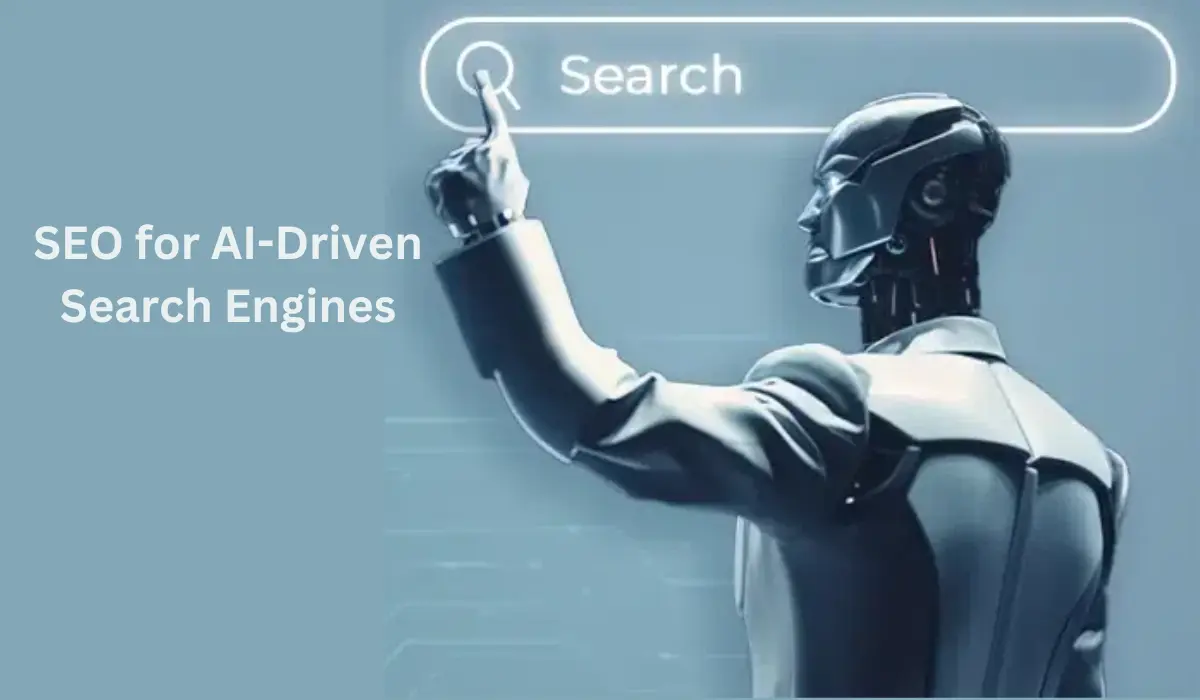As artificial intelligence continues to shape the digital landscape, AI-driven search engines are becoming increasingly prevalent. These search engines, powered by sophisticated machine learning algorithms, offer more personalized and accurate results by understanding user intent and context. Consequently, SEO strategies must evolve to align with the unique dynamics of AI-driven search engines. This article explores the key considerations for optimizing content for these next-generation search engines.
Understanding AI-Driven Search Engines
Traditional search engines rely heavily on keyword matching and backlinks to rank content. However, AI-driven search engines use advanced technologies like natural language processing (NLP), machine learning, and deep learning to understand user queries better and deliver more relevant results. These engines consider user behavior, preferences, and even the context in which a query is made, allowing for a more nuanced interpretation of search intent.
Key SEO Strategies for AI-Driven Search Engines
Focus on User Intent:
AI-driven search engines excel at interpreting user intent. Instead of merely targeting specific keywords, content creators should focus on understanding the underlying intent behind user queries. This requires a deep understanding of your audience and their needs. Content should address the specific problems or questions users are likely to have, making it more likely to appear in search results.
AI-driven search engines, powered by machine learning and natural language processing. These engines analyze context, user behavior, past searches, and even the time of the day to determine what the user truly wants. As a result, content that precisely matches user intent is more likely to rank higher in search results.
For instance, if a user searches for “best smartphones 2024,” an AI-driven search engine will understand that the user is likely looking for a comparison or review of the latest smartphones rather than just a list of phones available for purchase. It will prioritize content that provides comprehensive reviews, comparisons, and buying guides over simple product listings.
Natural Language Optimization:
With the rise of AI, search engines are getting better at understanding natural language. Content should be written in a conversational tone, using natural language that reflects how people speak and search. This includes optimizing for long-tail keywords and question-based queries that are becoming more common as voice search continues to grow.
AI-driven search engines, such as Google’s BERT and MUM algorithms, are designed to understand and process natural language more effectively than ever before. These algorithms can comprehend the context of a query, interpret synonyms, and recognize the nuances in user intent. As a result, content that is optimized for natural language is more likely to be accurately understood and ranked higher by AI-driven search engines.
For instance, if a user searches for “How do I start a blog?” an AI-driven search engine can recognize this query as an informational intent and prioritize content that provides step-by-step guidance rather than just articles with the keywords “start a blog.”
Semantic Search Optimization:
As AI-driven search engines become more advanced, the focus of SEO is shifting from mere keyword matching to understanding the meaning and intent behind those words. This shift, known as Semantic Search Optimization, involves creating content that aligns with the deeper understanding of context, relationships between concepts, and the intent behind user queries. Semantic search represents a significant evolution in how search engines interpret content, making it essential for businesses to optimize their websites and content accordingly.
AI-driven search engines utilize semantic search to understand the meaning behind words and phrases. This means that context, synonyms, and related topics are all taken into account. To optimize for semantic search, focus on creating comprehensive content that covers a topic in depth. Use related terms and variations of keywords to signal to search engines that your content is relevant to a broader set of queries.
For example, if a user searches for “Apple,” the search engine can determine whether the user is referring to the tech company, the fruit, or something else entirely based on the context of the query and the user’s search history.
Also Read
Structured Data and Schema Markup:
As search engines become more advanced, merely having high-quality content is no longer sufficient for optimal search engine visibility. Structured data and schema markup are essential tools that provide additional context to search engines about your content. By helping search engines better understand and categorize your information, you can significantly enhance your content’s visibility and relevance, particularly in AI-driven search environments.
For example, structured data can specify that a piece of content is a recipe, a review, an event, or a product. This additional layer of information helps search engines categorize and display your content in more informative and visually appealing ways, such as in rich snippets, knowledge panels, and carousels.
Schema markup is a form of microdata that uses a specific vocabulary (Schema.org) to create structured data. It involves adding tags to your HTML that correspond to predefined data types and properties. This markup tells search engines exactly what each part of your content represents, allowing them to display your content more effectively in search results.
For instance, if you have a webpage that features a product, schema markup can help identify the product’s name, price, availability, and customer ratings. This information can then be displayed directly in search results, making your listing more attractive and informative to potential visitors.
User Experience (UX) and Engagement Metrics:
AI-driven search engines place a strong emphasis on user experience. Engagement metrics such as click-through rates, dwell time, and bounce rates play a significant role in determining rankings. Ensure that your website is user-friendly, with fast load times, mobile responsiveness, and easy navigation. Additionally, create engaging content that encourages users to stay longer on your site and interact with it.
For example, a website with a clean, intuitive design, fast loading pages, and easy-to-navigate menus will likely retain visitors longer and encourage more interaction, which in turn boosts its SEO performance.
Personalization:
In the world of AI-driven search engines, personalization has become a powerful tool for enhancing user engagement, improving search rankings, and delivering more relevant content to users. Personalization involves tailoring the user experience based on individual preferences, behaviors, and demographics. As search engines become more sophisticated in understanding user intent and context, leveraging personalization can significantly boost your SEO efforts and create a more impactful online presence.
For example, an e-commerce website might show personalized product recommendations based on a user’s previous browsing behavior, while a news site might prioritize stories that align with the user’s reading history.
Voice Search Optimization:
AI-driven search engines are integral to voice search technologies like Siri, Alexa, and Google Assistant. To optimize for voice search, focus on natural language, conversational content, and question-based queries. Additionally, consider the user’s likely intent when they perform a voice search, which often involves local or immediate needs.
Content Freshness and Relevance:
AI algorithms are adept at identifying fresh and relevant content. Regularly updating your content and ensuring it remains relevant to current trends and user interests is crucial. This helps with rankings and keeps your audience engaged and returning to your site.
Content Freshness refers to the frequency with which your content is updated or newly created. Search engines favor fresh content because it is more likely to reflect the latest information, trends, and developments in a given field. Regularly updating your content signals to search engines that your site is active, authoritative, and committed to providing users with timely and relevant information.
Ethical AI Considerations:
As AI becomes more prevalent in search, ethical considerations such as algorithmic bias and data privacy are becoming increasingly important. SEO professionals should be aware of these issues and strive to create content that is fair, unbiased, and respects user privacy. Transparent practices and responsible data usage can also enhance trust and credibility, which are important factors in AI-driven search rankings.
In the era of AI-driven search engines, ethical considerations are more important than ever. As businesses harness the power of AI to optimize their SEO strategies, they must also navigate the ethical challenges that come with these technologies. By promoting fairness, transparency, privacy, and responsible content creation, businesses can build trust, enhance user experience, and ensure long-term success in an increasingly AI-driven world. Ethical AI practices are not just a moral obligation—they are a strategic advantage in the digital marketplace.
Conclusion
SEO for AI-driven search engines requires a shift from traditional SEO practices to a more holistic approach emphasizing user intent, natural language, and user experience. As these technologies continue to evolve, staying ahead of the curve will involve continually adapting your strategies to align with the capabilities of AI. By creating high-quality, relevant content that resonates with your audience, you can improve your visibility and success in the AI-driven search landscape.





